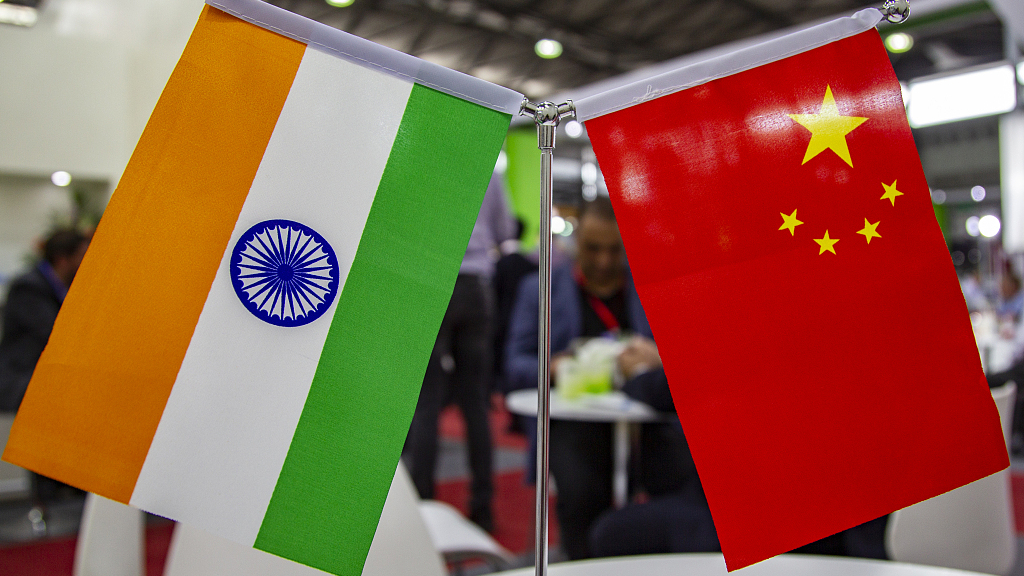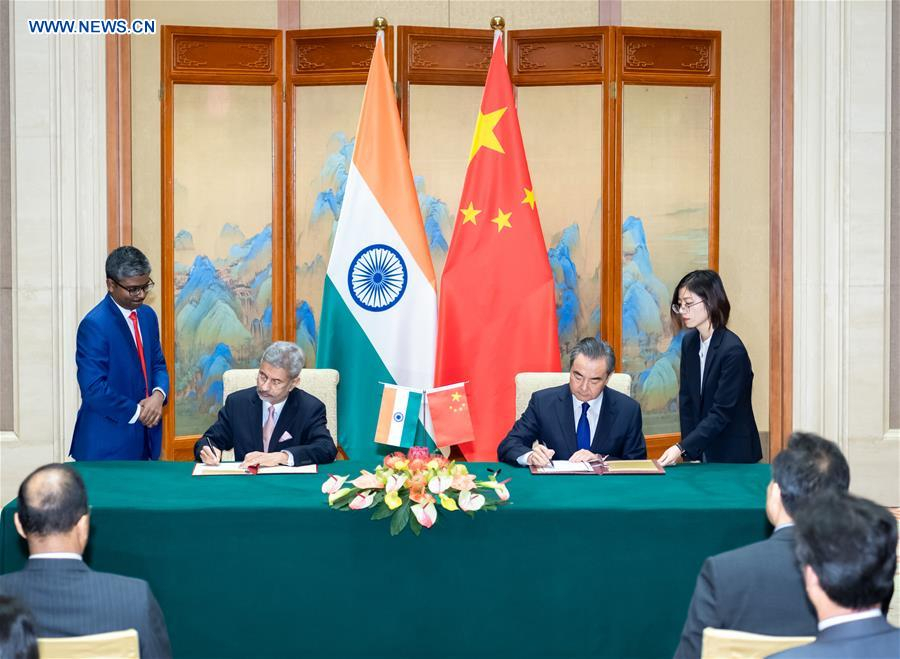

Editor's Note: Ning Shengnan is an assistant research fellow at the Department for Developing Countries Studies at the China Institute of International Studies. The article reflects the author's opinions, and not necessarily the views of CGTN.
For the last two days, the second meeting of the China-India High-Level Mechanism has been held in Beijing. The meeting is co-chaired by Chinese Foreign Minister Wang Yi and Indian External Affairs Minister Subrahmanyam Jaishankar, who is paying his first official visit to China after assuming the position.
This high-level mechanism on cultural and people-to-people exchanges is a significant outcome of last year's informal summit held in Wuhan of China. In that unprecedented gathering, Chinese President Xi Jinping and Indian Prime Minister Narendra Modi decided to establish the platform to deepen mutual understanding.
This framework has led to progress in exchanges and cooperation on tourism, art, films, media, culture and sports. This second meeting has provided a chance to follow up on the same items and discuss new initiatives for enhancing people-to-people exchanges between the two countries.
Culture constitutes an invisible foundation of a society. Through culture, people define themselves, find their positions and make contributions to society. Therefore, it is of vital importance to understand its culture first, and people-to-people exchanges act as the bridge between the two different societies.
This is especially important for India and China, as the two neighbors used to know little of each other.

Chinese State Councilor and Foreign Minister Wang Yi and Indian Minister of External Affairs Subrahmanyam Jaishankar co-chair the second meeting of the China-India high-level people-to-people exchanges mechanism, in Beijing, capital of China, August 12, 2019. /Xinhua Photo
In the past 50 years, both countries hold strong determination to develop and to fight against poverty. However, for quite a time, like most developing countries, their sole focus on economic growth has led them to look at only the experiences of other developed countries. As a result, there's been little attention to the Asian neighbors.
Lack of knowledge inflicts misunderstanding, and misunderstanding often leads to malicious labeling and prejudice. Even though the two countries retain a political friendship and close economic relations, without a sound people-to-people connection, the ties are fragile and can easily be fractured.
This was what happened between India and China when the 2017 Donglang (Doklam) Standoff broke out. This event stirred up negative feelings on both sides. Having little communication on the people-to-people level, it is much easier to debase and even demonize the other.
India and China are close neighbors. The two are also the biggest developing countries in the world. Although there are many differences, the aspirations for a better life are the same. People share similar beliefs that their living standards will be improved through hard work.
As developing countries, the two also face similar challenges in areas of poverty elimination, economic reform and job creation. This is why Chinese people find Bollywood movies like "Dangal" and "Hindi Medium" familiar.
The cultural and people-to-people exchanges between India and China could prove to the world that different civilizations could stay in harmony by dialogue. And a country's development and modernization should not be based on the loss of other states. On the contrary, it could create benefit for others.

Chinese State Councilor and Foreign Minister Wang Yi (2nd R, back) signs a document with Indian Minister of External Affairs Subrahmanyam Jaishankar after co-chairing the second meeting of the China-India high-level people-to-people exchanges mechanism, in Beijing, capital of China, August 12, 2019. /Xinhua Photo
In this sense, the High-Level Mechanism means more than just a platform for the two states to communicate, it could set example for the globe about how different civilizations get along peacefully and carry out full-blown cooperation in every aspect.
The Indian Foreign Minister Jaishankar's three-day visit is also a way to make preparations for President Xi's visit to India later this year for the second Informal Summit.
With the 70th anniversary of establishment of diplomatic relations coming soon, there will be more opportunities for the public to participate in exchange programs and to get to know each other.
As Dr. Hsiao-Tung Fei, one of the most famous Chinese anthropologists used to say, "appreciate the culture or values of others as do to one's own, and the world will become a harmonious whole." This is the very spirit of the China-India High-Level Mechanism on Cultural and People-to-People Exchanges.
(If you want to contribute and have specific expertise, please contact us at opinions@cgtn.com.)

Copyright © 2018 CGTN. Beijing ICP prepared NO.16065310-3
Copyright © 2018 CGTN. Beijing ICP prepared NO.16065310-3